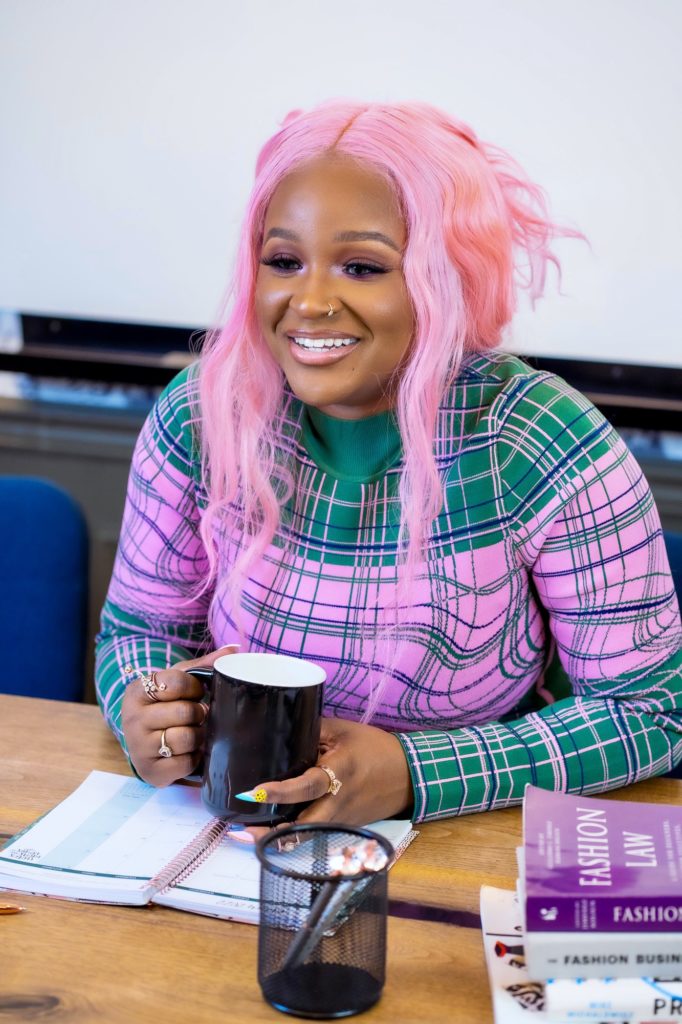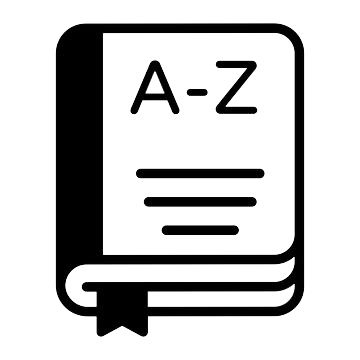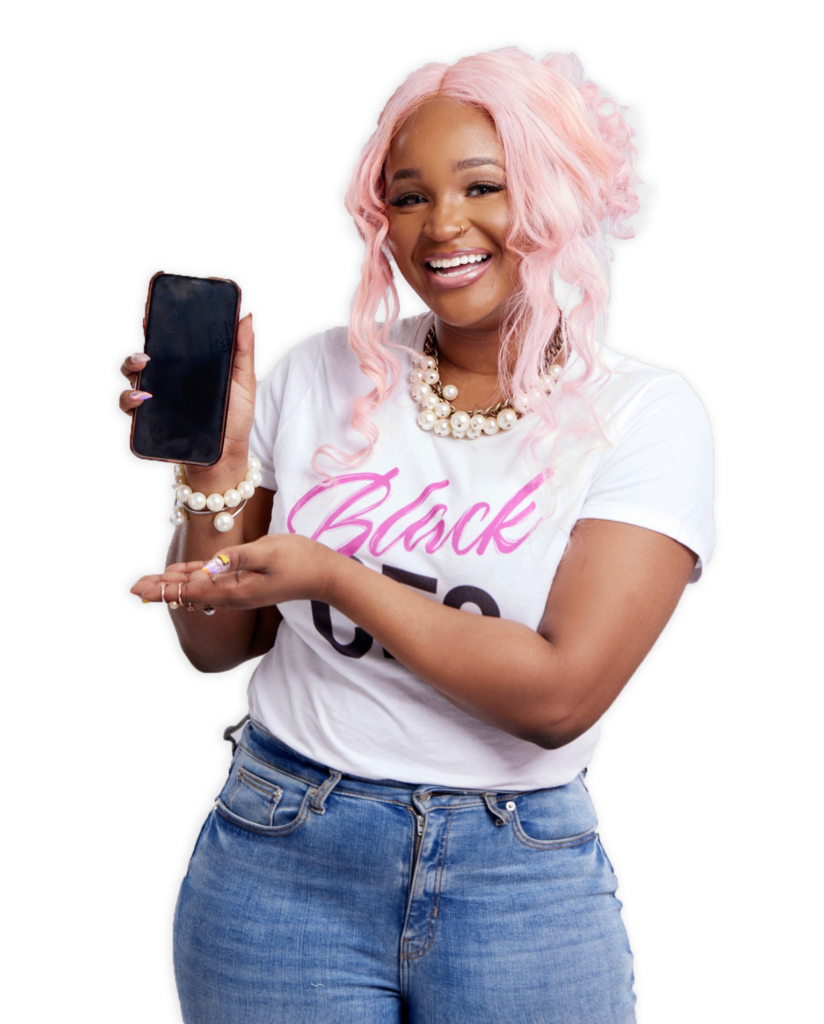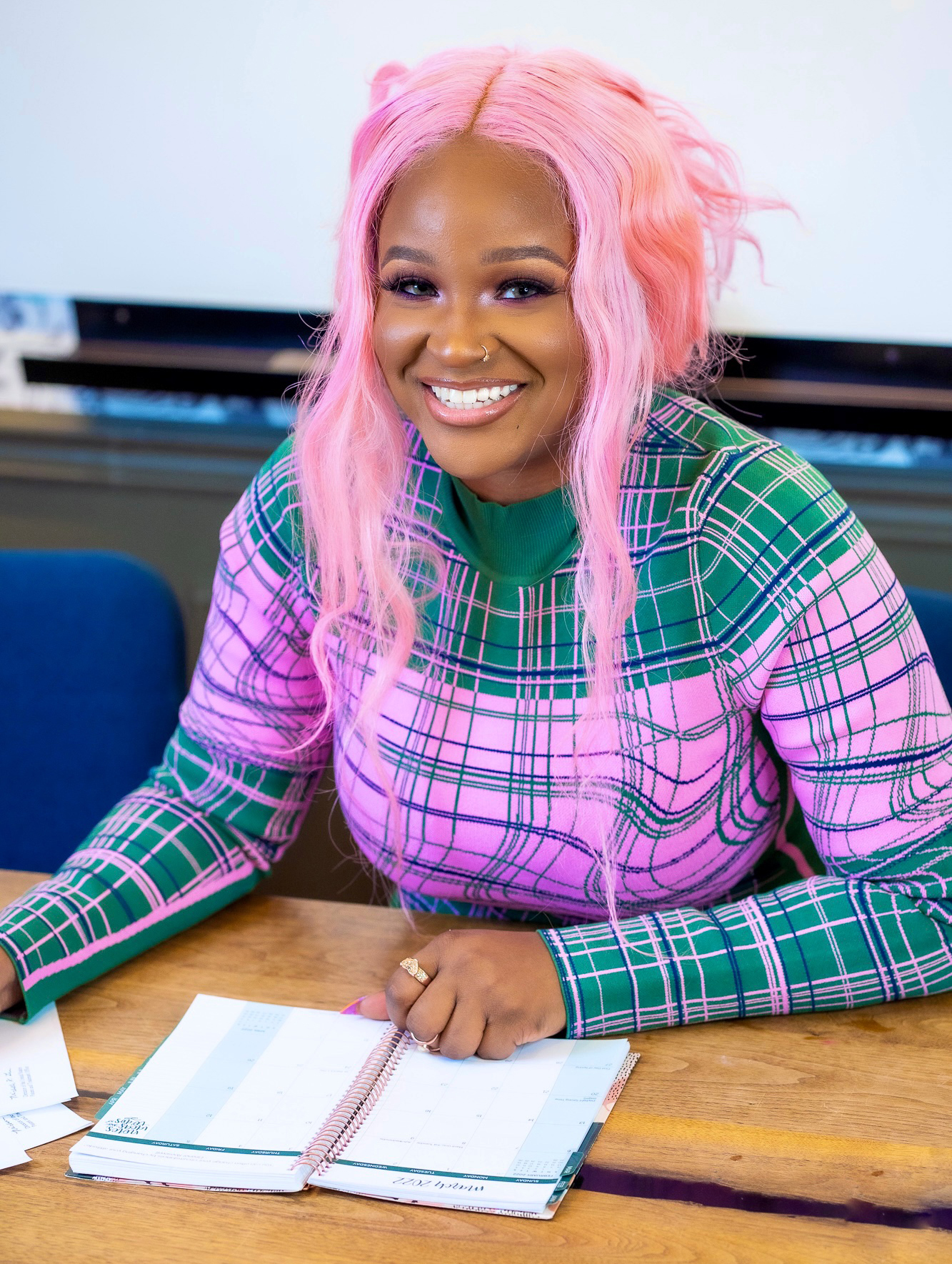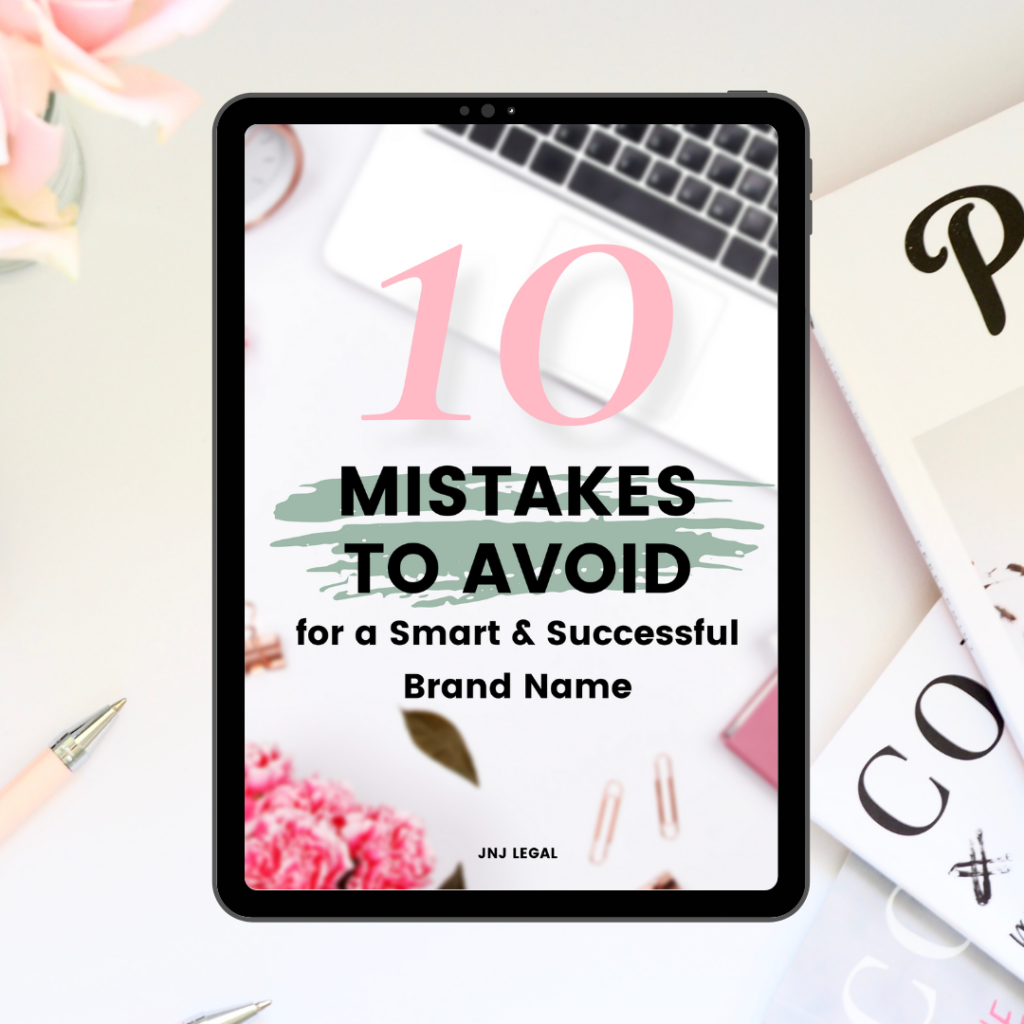There’s a “science” behind business names that most entrepreneurs, brand experts, and business coaches ignore! And that’s trademark law.
Seriously! Let me ask you this:
When you’re starting a new business or brainstorming a new product, course, or event, what’s one of the first questions you ask yourself?
Right! “What should I name it?”
At least if you’ve paid attention to the topic of this post, that’s what your answer should be…
And therein lies exactly what I mean! Because what most do not realize is that…

(1) Whatever you decide to name your next cash cow IS subject to the guidelines, rules, and “formulas” of trademark law!
After all, that’s what a trademark is – a distinctive mark like a name or a logo that identifies the source of a particular good or service.
And (2) all these business names aka trademarks exist on a LITERAL spectrum! Sort of like having a strong password vs a weak password. Because it’s not enough to just create a name that is cute and catchy and “marketable”. Your name needs to have strong “trademarkability”.
So if you want to have the best business name possible, it’s important that all entrepreneurs consult with the rules of trademark law, including learning this spectrum. This post will cover just that.
And after reading this post, you may also want to check out some of the strategies that we use in our Brand Name Consultation that builds off this spectrum and helps our clients develop some amazing trademark-worthy business names! (Future post to be linked later!)
For now, let’s get into the spectrum of marks!
Author’s Note: The law can be difficult and confusing for many to understand. I find it helpful to break down legal concepts and rules into simple math equations, scientific formulas or tech references. Because even if you hated math as a kid, you can still understand 2+2=4 or the equation of a trademark (trademark = mark + product/service).
The Spectrum of Marks

To build a strong business name, one of the first things you should learn is the spectrum of marks.
If you prefer to watch a fun, animated video explanation of the spectrum, check out our video below! Otherwise, continue reading…
Fanciful Marks 💎💎💎💎💎
Fanciful marks are made-up words or symbols that have nothing to do with the products or services being offered.
They include such name brands as:
Eg. Exxon, Polaroid, Rolex, Google, Reebok, Kodak, Xerox, and Dubsado
All of these brands are world-famous! And what’s even cooler is that they transcend language barriers. No matter where you are in the world, or what language you speak, Google is still Google. Polaroid is still Polaroid. There is no translation.
That’s why fanciful marks are the BEST marks that a brand can have! It’s like adding a new word to the world!
Fanciful marks are common with inventions/products, but they can apply to any business model so it’s definitely worth a try to create one!
Arbitrary Marks 💎💎💎💎
Not too far behind fanciful marks are arbitrary marks.
Arbitrary marks refer to words with significance that are recognized in everyday language, but instead of signifying that particular thing, it signifies something entirely unrelated to the product or service to which the mark is attached.
That can sound like a mouthful, but an example will easily illustrate what I mean.
Eg. Apple for computers and tech devices; Blackberry for mobile phones
We all know about apples since diapers and learning our ABC’s. Prior to the late Steve Jobs, apples had nothing to do with technology. But now, since Jobs wisely decided that Apple would be the name of his now billion-dollar tech company, “apple” takes on a whole new meaning in our society.
And therein lies the power of an arbitrary brand name – the power to give a common word a whole new cultural meaning. The power to make (or require that) a person use context clues to decipher whether another is referring to the actual fruit or a computer.
Arbitrary marks ask that we use and think of words in a different and unexpected way, and can therefore lend itself as a powerful marketing tool.
And P.S. the same could be said about the marketability of fanciful marks – your imagination can really run wild when the word itself is already imaginary. In terms of marketing and branding your business, the world is your oyster with a fanciful mark.
[tqb_quiz id=’32672′]
Suggestive Marks 💎💎💎
Next up, we have suggestive marks.
Suggestive marks refer to words that SUGGESTS a feature or characteristic of the goods or services, but requires a bit of thought and imagination to determine what the goods or services are.
Eg. Microsoft: micro –> microchips and soft –> software
Greyhound: greyhounds –> fast animals —> fast transportation
As you can see, suggestive marks are not obvious at first. As a consumer of both companies, I never even considered how Microsoft or Greyhound got their name until learning about trademarks in law school. There’s this inherent subtlety in these names and other suggestive marks.
That’s why we say that suggestive marks suggests a feature about the products/services, but unlike descriptive or generic marks, which we’ll cover next, do not explicitly state what the product/services are. With suggestive marks, consumers have to actively apply some “thinking power” to find the connection between the brand name and the product/service being offered.
Suggestive marks are fairly common business names among product-based and service-based businesses alike. And it is the last strength that business owners should aim for when naming their business, products, events, processes, etc.
Descriptive Marks 💎💎
And this brings us to one of the last notches of our spectrum, descriptive marks.
Descriptive marks refer to words that DIRECTLY DESCRIBE a characteristic, ingredient, quality, feature, or purpose of the goods or services.
Eg. American Airlines
The service is DIRECTLY DESCRIBED within the name. It’s an airline company based in America. That’s it.
These descriptive marks require zero imagination or explanation. They’re no fuss and straight to the point, making them an unfortunate popular choice among entrepreneurs and especially, brick-and-mortar stores.
From a marketing perspective, these descriptive marks may seem like a great idea for search engine optimization (SEO) and “searchability”.
However…
From a trademark perspective, a descriptive mark is one of the most troubling business names you can have. That is, because descriptive marks are notoriously rejected for trademark registration by the USPTO (United States Patent and Trademark Office) in an effort to avoid unfair competition.
One of trademark law’s main objectives is to remove unfair competition. Our society is hesitant to allow one company to obtain exclusive ownership over a word/phrase/mark that other competitors would naturally AND reasonably need to use within their own business’ operations and advertising. And so, the USPTO is tasked with ensuring that companies do not receive an unfair advantage by monopolizing terminology and phrases that should be available for all.
So, although we all know the billion-dollar company, American Airlines, today, it’s easy to see how broad and over expansive this name actually is. After all, American Airlines isn’t the only airlines with American roots. It’s possible that other airliners may have needed to use “American airlines” in their own marketing, advertising, and business affairs.
Yet, American Airlines has a registered trademark! So, though it’s not impossible to trademark such a descriptive name, you should expect an uphill battle to do so.

In the spirit of fairness, the USPTO allows companies like, American Airlines, California Pizza Kitchen, Kentucky Fried Chicken, or any other business, to successfully trademark their descriptive mark AS LONG AS they are able to show that their mark has acquired “secondary meaning”.
And here, secondary meaning = high degree of fame and notoriety
You need millions in revenue. You need hundreds of thousands, if not, millions of followers. You need large advertising receipts and large investments. You need unsolicited articles and posts about your company. You need surveys and studies that show that consumers recognize your mark (1) as a company name and not just industry terminology, and (2) as YOUR company name alone. Bottom line is, you need to be FAMOUS.
Compared to having a fanciful, arbitrary, or suggestive mark, you have to SHOW and DO a lot more than the bare minimum to successfully trademark a descriptive business name.
Have you been in business for 5+ years?
If you have been in business for at least 5 years and you do have evidence like what I’ve described – you may be in luck! All hope isn’t lost for your trademark registration. You should consult with myself or an attorney for help!
But if you’re fairly new in business and you’ve created a descriptive business name, you’ll have an easier time and less of a headache just rebranding.
Trust me!
You do NOT want to operate under a business name that you can never legally own! Your business is meant to bring you and your family wealth, freedom, and peace.
Do NOT start on the wrong foot.
You do NOT want to waste precious time and money working and building your brand, gaining a following, getting steady income, etc. to then deal with copycats and thieves who swoop in to profit off your hard work. And mind you, you’ll have little recourse of the law if you can’t even show ownership of your mark.
Generic Marks 💎
And lastly, we have generic marks. The WEAKEST marks!
Generic marks refer to words that are too closely related to the good or service such that it ACTUALLY NAMES the good or service. They are incapable of being trademarked on their own.
Eg: You can’t trademark “shoes” in clothing & footwear industry; can’t trademark “apple” in food industry
And the same reasoning we mentioned while discussing descriptive marks applies here. Monopolies are a no-no; fairness is the goal.
So, Jobs can trademark “Apple” because an apple has nothing to do with electronics, nor would his competitors ever need to refer to apples when marketing or selling their own tech products. However, a fruit farmer selling apples can’t trademark “Apple” as her company name on its own. She would need to add some other distinct word(s) for the USPTO to grant a trademark registration. And that’s when the farmer SHOULD revert back to the spectrum of marks to create something fanciful or add an arbitrary or suggestive word that is not already in use in her industry.
Without adding MORE to this fictional company name, her trademark application will almost surely be rejected.
And by the way, adding more doesn’t mean you just add a geographic location to your name, like American Airlines or California Pizza Kitchen, or laudatory words, like “best”, “top quality”, or some other vague adjective. In fact, geographic locations can also harm your trademark application, but that’s a story for another day…
You should just take away that the word(s) have to be something of substance! Something that can give the mark a different meaning. Only by adding unique, substantial words can you really transform a generic mark into any of the stronger marks mentioned before.
Conclusion
So now we’ve covered the entire spectrum of marks! If you ever need a quick summary of the spectrum, save or pin our Instagram carousel for easy referencing! Or save this TikTok.
@thearttorney Here’s how you can legally test the strength💪🏾 of your brand name! Rate your brand name 1-5⭐️ If you need help, leave a comment! #trademarks #trademarktip #trademarklaw #businesstiktok #brandingtips #blackentrepreneur #businesstips #smallbusinessowner #buildabrand #trademarklawyer #blackbusinessowner #blackbusinesswomen ♬ original sound - Jaleesa
If you’ve created a brand name that meets this spectrum, then it’s time to legally protect it! Schedule your trademark discovery call now to have us assess your trademarkability and get started on your trademark journey!
If you need help creating a brand name that meets this standard, you’ve come to the right place! Book your Brand Name Consultation and create your 1 Hour Trademark! You can learn more about the consultation here.
And stay tuned! We’ll be giving you a quick look into some of the strategies that we implement during our Brand Name Consultation to help our clients create a brand name that is not only STRONG and aligned with this spectrum, but also exclusively available for trademark registration!

